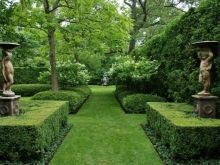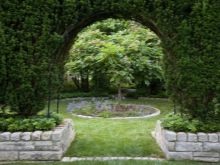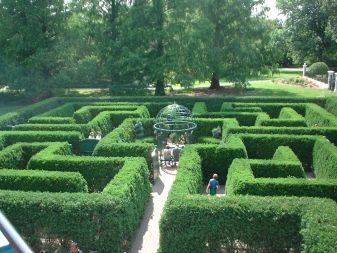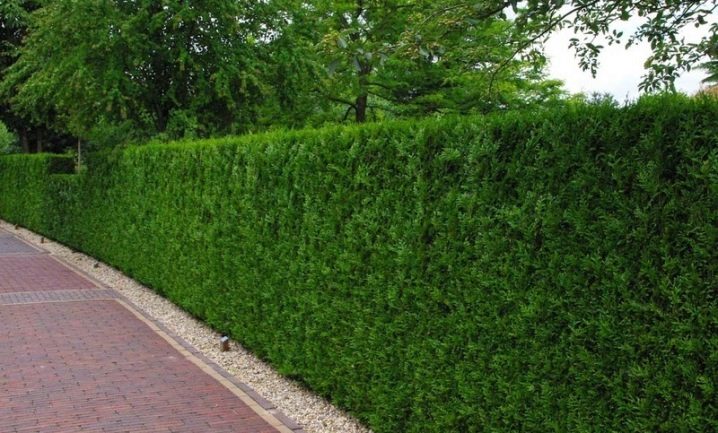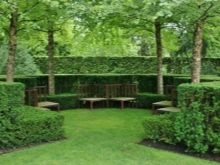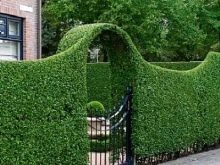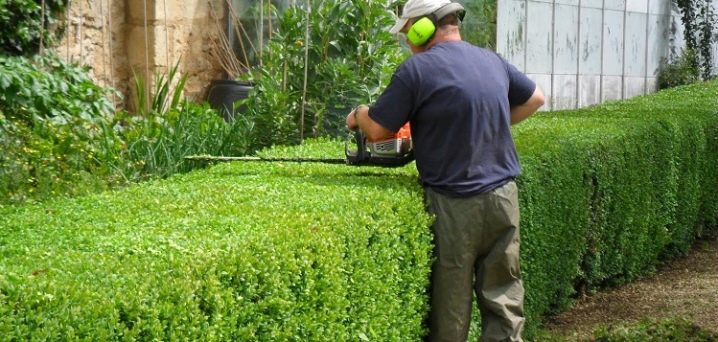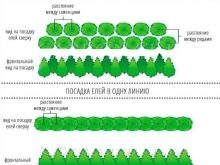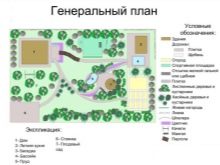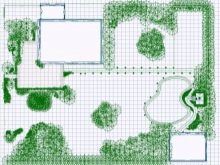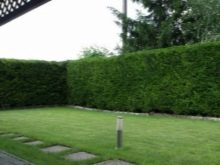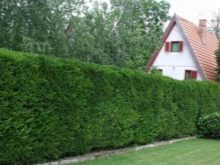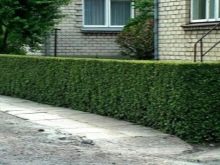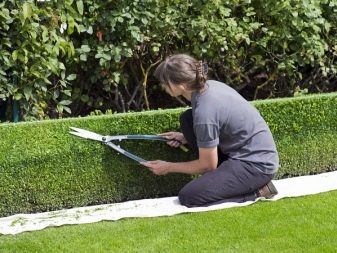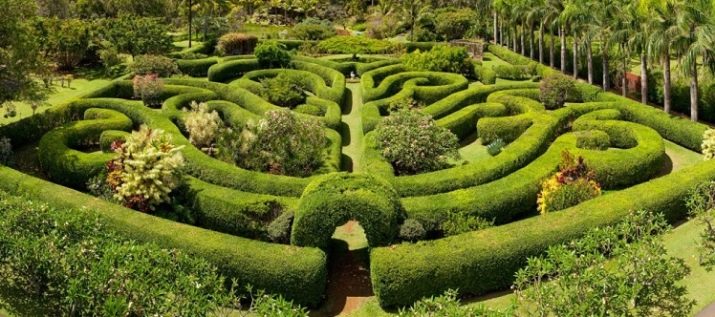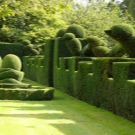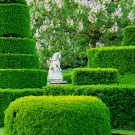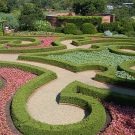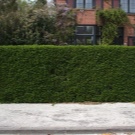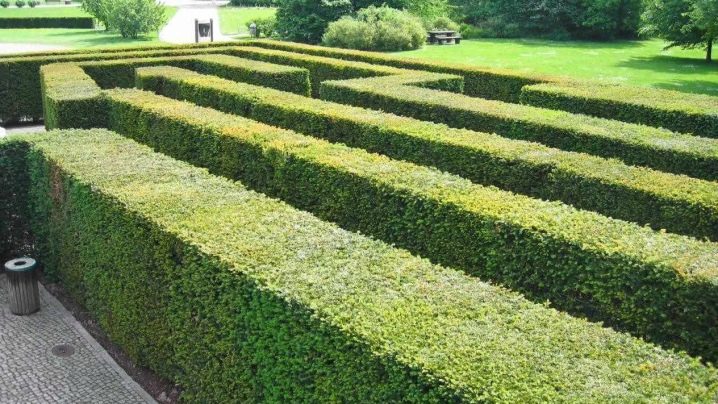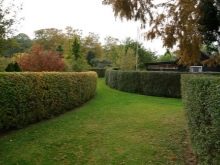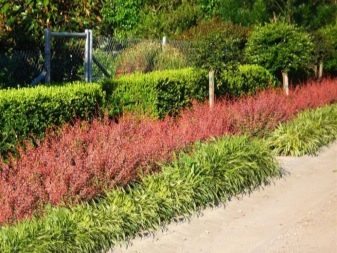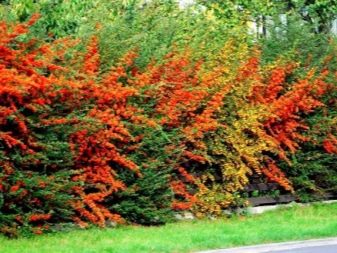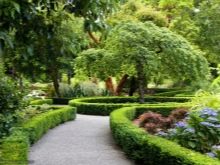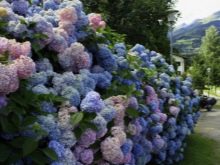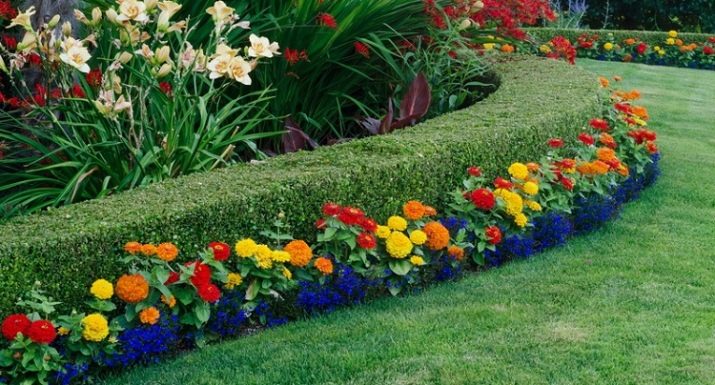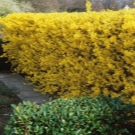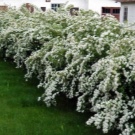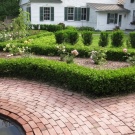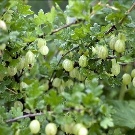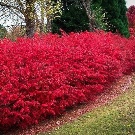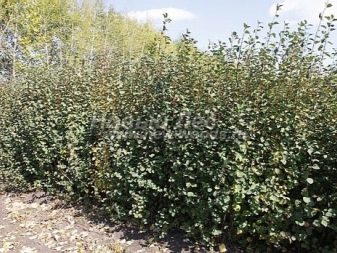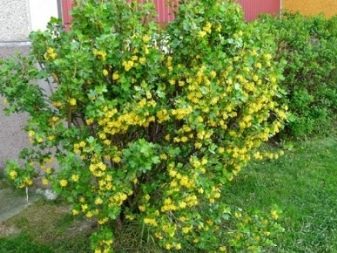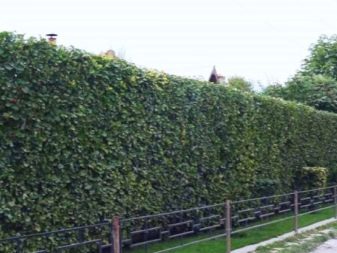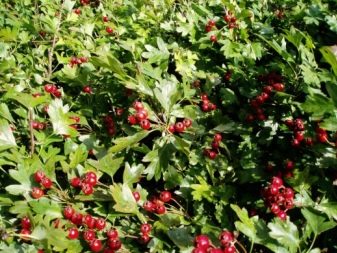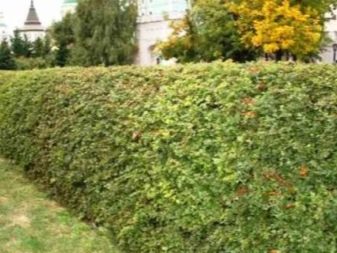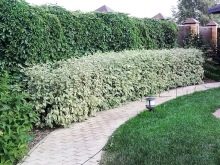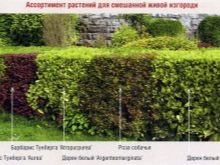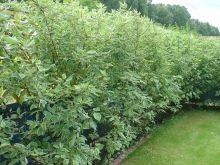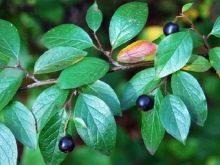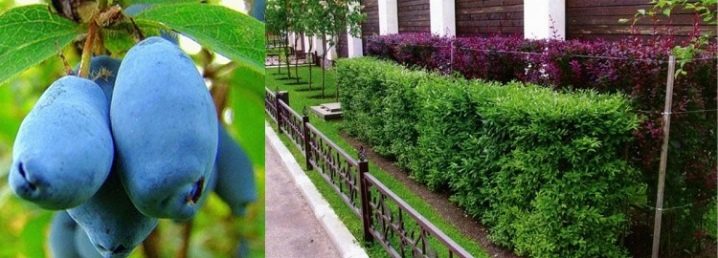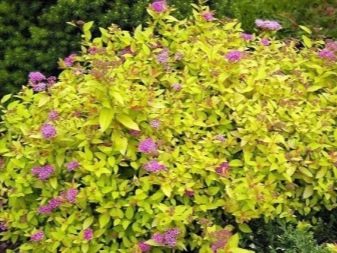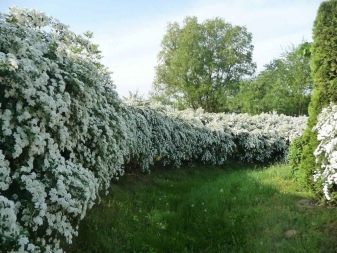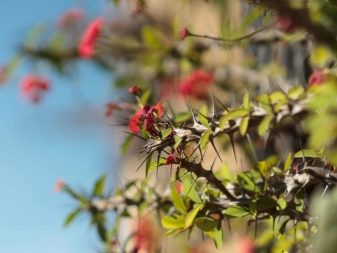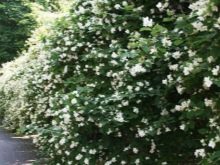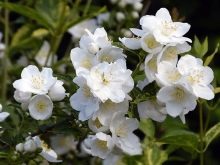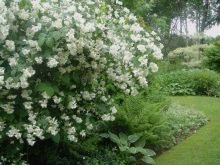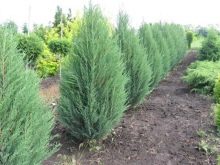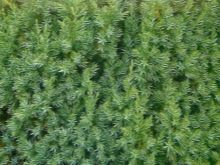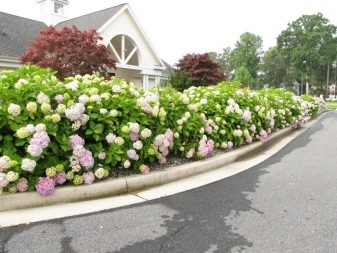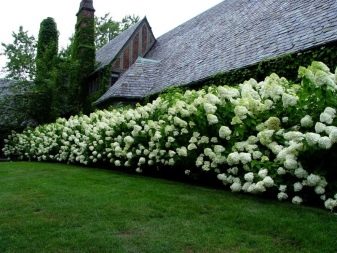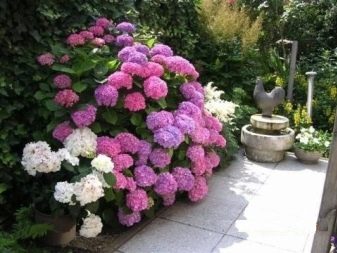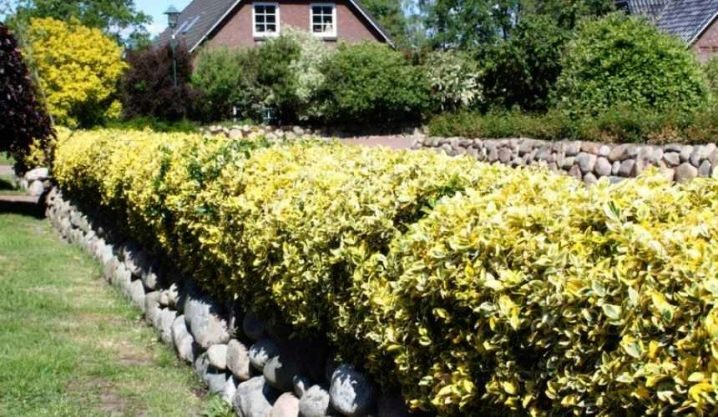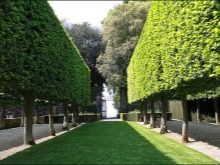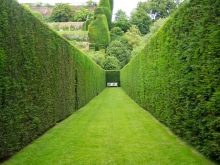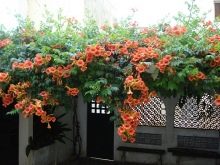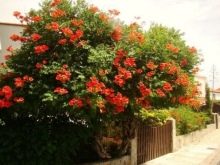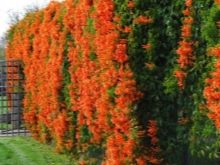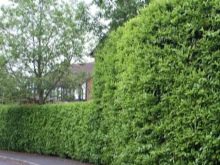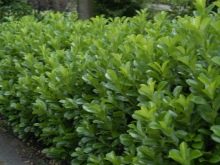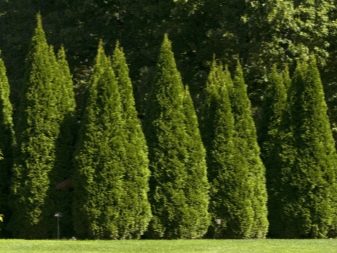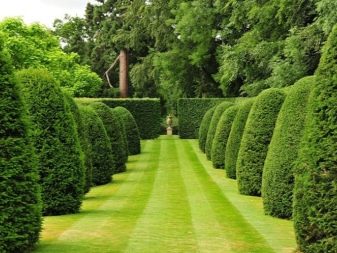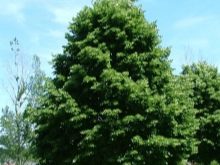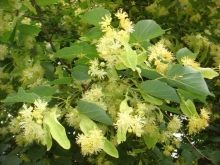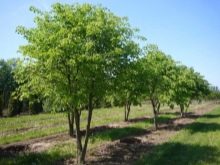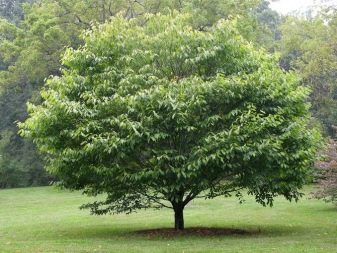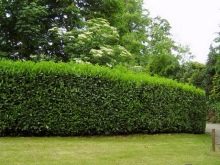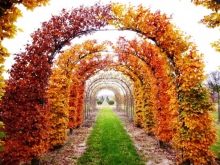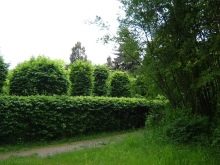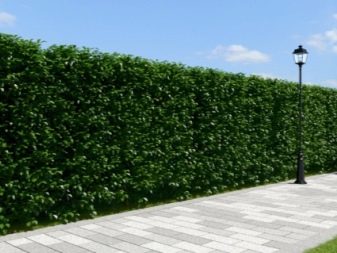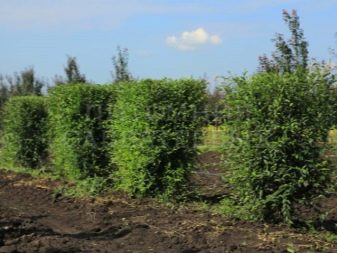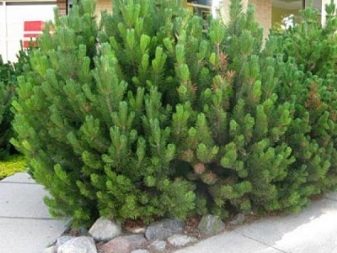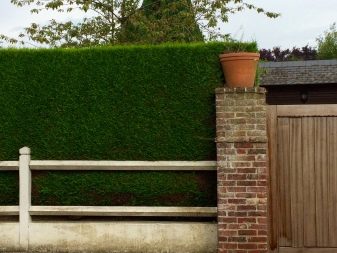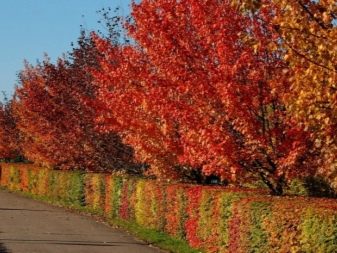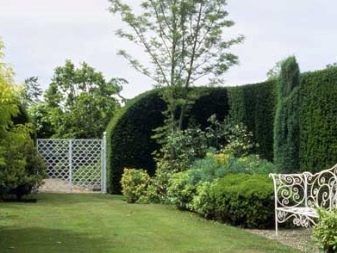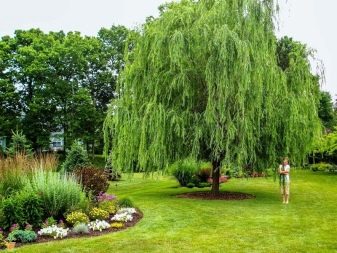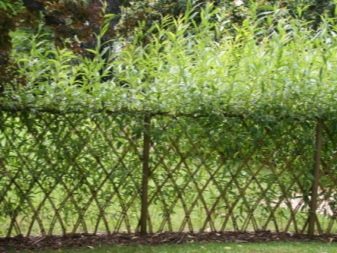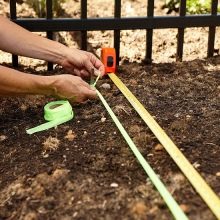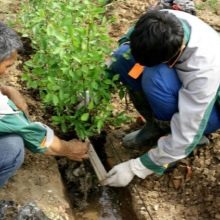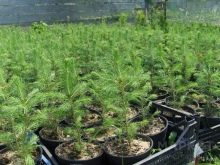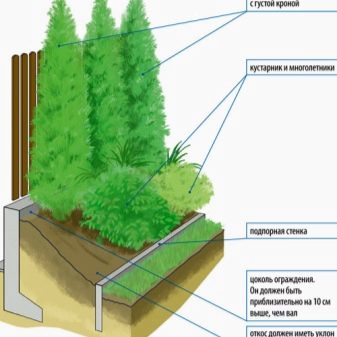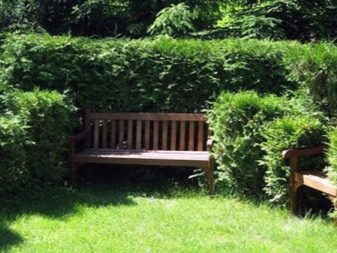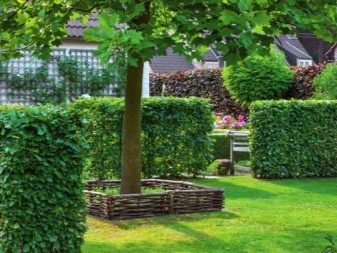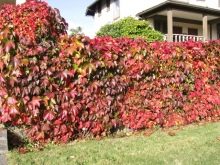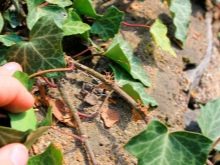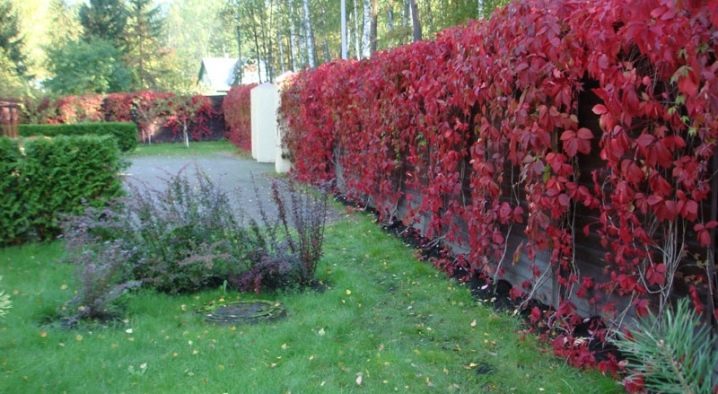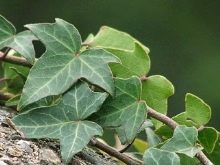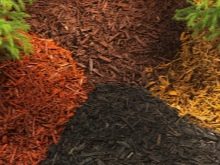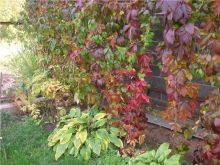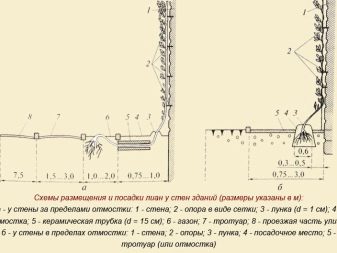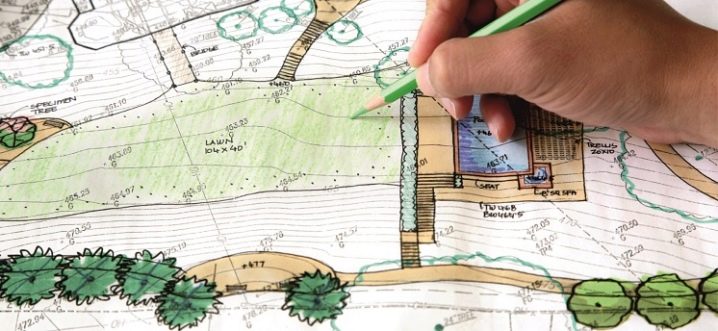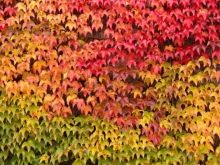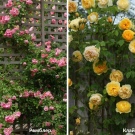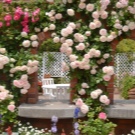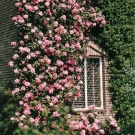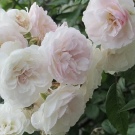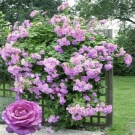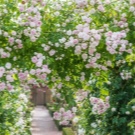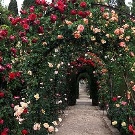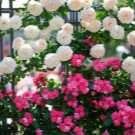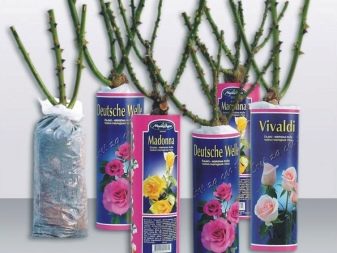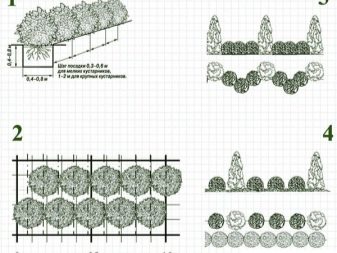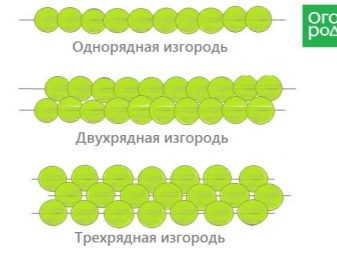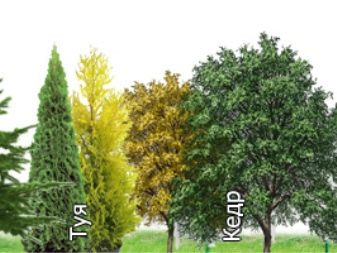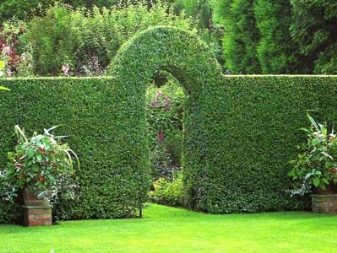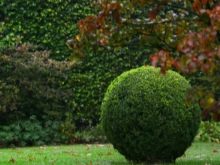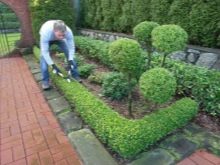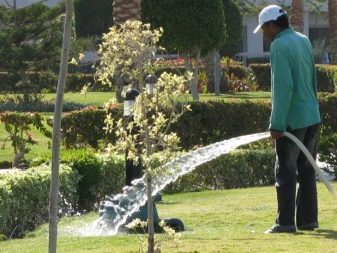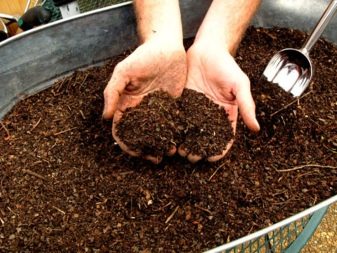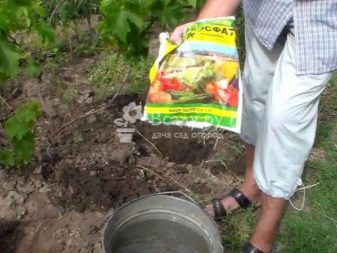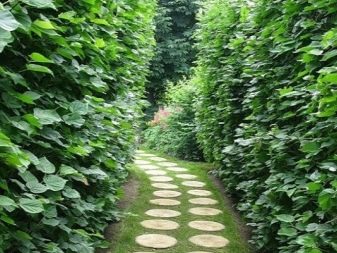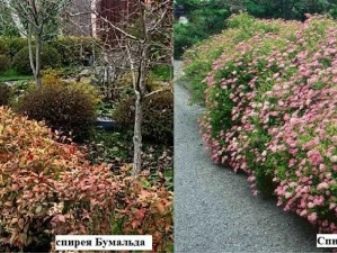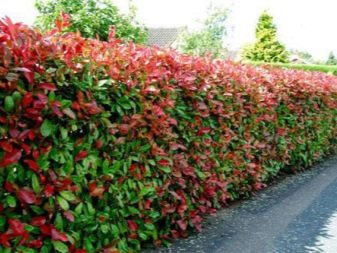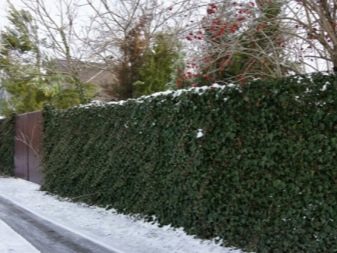The subtleties of creating a hedge
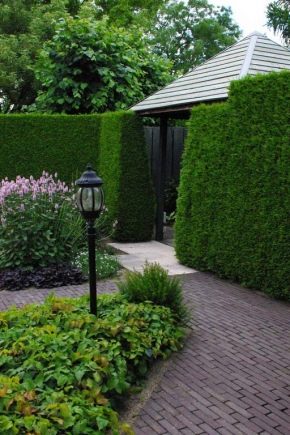
To limit the suburban area or the backyard territory, it is not at all necessary to build a brick fence, to put reinforced concrete slabs or steel sheet structures. Protection in the form of a green barrier turns out to be quite effective and very aesthetic. But to create it and maintain, as it should, is quite difficult.
If you do not know all the subtleties and nuances, you can face serious problems.
Special features
The hedge appeared for the first time in France, where about three hundred years ago they began to decorate country estates with gardens.Shrubs and trees served as a decoration of the territory, and cover it from the wind. Plantings could be in excellent condition, but only under the condition of constant, intense care. In this regard, nothing has changed since ancient times.
The standard system of work involves planting trees or shrubs in one, in two lanes; some specimens are trying to bring closer to form an irresistible green belt.
The altitude can be unequal: a hedge that is less than 1 m is considered low; if it grows to 150 cm, it is classified as average. Finally, a high hedge implies improvised fences reaching 2 m or more.
The choice of the speed of the growing season of plants is a personal matter of the gardener and the customer. So, slow-growing trees and shrubs will have to be cut less often, but fast-growing plants leave much more design possibilities. The artificial hedge sometimes includes flowering and fruit crops that are almost never pruned - this is necessary so as not to reduce their yield and visual appeal.
In some cases, the protective properties of shrubs and trees are not enough to replace a full-fledged fence, or the plants themselves are under threat. Then use additional railing blocking the passage of people, travel of vehicles on green areas. Thanks to them, they manage to keep decorative gardening whole.
Thinking through the type of garden fencing, focus on the desired result. Most often, the barrier is formed from the bushes of the same type, then try to choose the most beautiful rocks. If, turning over the names of shrubs, you could not choose the best one among them, then you should try to make a mixed fence.
But it is already more difficult, since it is required to make a preliminary landing plan.
It is desirable to combine different plants so that they create a feeling of their spontaneous, uncontrolled growth on the plot.
Advantages and disadvantages
What are the specific features of the green walls, it is already clear. But we still have to figure out how they are better or worse than other options, which strong and weak positions they have.
The device of a hedge, according to the majority of the experts understanding landscaping, allows:
- Create a harmonious microclimate on the site.
- Improve the conditions for leisure.
- Avoid the need for painting (mandatory for any concrete, metal structures).
- Save moisture in the ground, avoid soil drying.
- Give shelter to birds hunting field and garden pests.
- Create a cool shade for the summer months.
- Cover up poorly designed, ugly structures, just farm buildings.
- To delimit the space of the infield into separate zones.
And in relation to each of these problems, the green wall can be considered one of the best solutions to date. No achievements of technology and modern construction materials do not allow to achieve the same effect.
The only difficulty is a long wait for a positive result, construction is much faster. There are two options: either acquire trees that have already grown and bushes, or save money and wait.
The use of fruit crops for the barrier can lead to the fall of berries, fruits on lawns and sidewalks, however, it is enough to collect a ripened crop on time to turn this disadvantage into dignity. Also note that green fencing requires a large enough area, more than the usual fence.
Kinds
One should not think that a hedge is something single and monolithic and has no separate options. You can make a green fence in order to protect the area outside, to break it inside according to the functionality. Or to surround a stylish barrier flower garden, walkway, mixborder.
In all these cases, the height and density of planting vary flexibly; they are both evergreen and seasonal in composition of crops. It is possible to plant the plants with the expectation of giving them a certain configuration by cutting or on leaving the natural species intact.
Along the paths or paths most often planted borders of slow-growing species with leaves of small size. Fences of medium height (1-3 m) are mainly designed to isolate isolated segments in the garden.
The two-row living wall is even higher and it is guaranteed to cover the garden from car exhausts, wind gusts, dirt and dust brought from outside. Use in such fences can only be those cultures that are easily experiencing a haircut and undemanding to the conditions of detention. Otherwise, under the influence of the same exhaust gases, the external beauty will fade.
The hedge from climbers should not be confused with the options that are made of evergreen, flowering and deciduous crops - the practical and external difference between them is very large. Trellis plantations are created from plants of both one and several species, their characteristic feature is the interweaving of branches between themselves.
A two-tier hedge speaks for itself: it uses two rows of plants, one of which is higher than the other. It is advisable to bring a lower culture to the forefront so that the whole composition can be viewed outside the site.
What plants fit?
In addition to the configuration, it is worthwhile to look at the choice of optimal cultures (good, this topic is inexhaustible and still it will be possible to make out only general principles). We immediately say that relatively low plants and trees need to be disassembled separately.
Shrubs
Evergreen shrubs are a constantly sought-after plant species that attracts the attention of decorators with unchanged grace in any season. Coniferous fencing is charming in winter and summer, it can be grown on any soil, it should be rarely watered and cut.Please note that even the fastest growing breeds will not be able to immediately acquire the final form, it will take some time to achieve it. It is recommended to choose plants not on their own, but with the support of an experienced landscape designer.
The key parameter in the selection of "candidates" should be considered the height of each culture. So, gooseberry bushes, Japanese spirea, yellow acacia, St. John's wort and boxwood allow you to form only low fences.
If you want to create a fence over 3 m, you have to take a dogrose, lilac, yew, treskun and some other breeds.
Each bush has its own characteristics:
- So, Irga the spring is silver-green, in the summer months its leaves have a thick green tint, and with the onset of autumn it changes to a bright orange color. Fruits are nutritious and can be used to treat individual diseases. Irgu almost do not touch the disease and harmful insects, this culture is very unpretentious.
- Plantings golden currants can reach 2 m, the pubescent shoots are framed by toothed leaves (in the autumn months, these leaves become pinkish). The flowering period is the end of spring and the beginning of summer, the fruits are purely decorative, their taste is low. Watering is rarely necessary, but it is necessary to feed with organic matter.
- More popular than the previous two species, thickets hawthorn. Their height varies from 20 to 40 dm, the length of the leaves is up to 0.12 m. When flowering, bright inflorescences appear, the fruits are in the shape of a pear or round, like those of a wild rose. Ripening continues until the first frost, in September-November, the harvest becomes an attractive decoration.
Terry varieties that are similar in appearance to the roses are mass-grown.
Hawthorn can also be a tree (this is, for example, Siberian hawthorn, growing up to 6 m, capable of living in a poor land).
- Derain bushes reach up to 30-40 dm, stand out with beautiful leaves, some varieties are different in that the center of the leaf is light green and its perimeter is white. Many gardeners prefer red turf, famous for the characteristic color of the branches. Flowering occurs in the last month of spring, with the emergence of "umbrellas". In the autumn, the color of the foliage changes - it turns red or turns orange.
Derain is compatible with any type of soil, so long as it is sufficiently well moistened. It will take once a year (spring) to trim the bushes.
- Growing up barberry in demand no less than deden.Shrub can stretch up to 300 cm in height, covered with a slight oval foliage. Starting around May 15, the barberry has not only bright green leaves, but also characteristic yellowish brushes. In the fall, the predominant color is somewhere between orange and red, the fruits ripen, they can be very different in appearance: pink, black, yellow, red, even brown.
- Often in homesteads you can see black chokeberry - its shrubs from 2 to 3 m are usually covered with dark green leaves, by the end of the growing season they are repainted in bright red tones. When flowering white buds appear with a pink tint. The fruits are edible, allow you to cook sweets and even wine.
- Short (no more than 0.7 m) heather It blooms very beautifully, but in terms of convenience for the gardener, it is inferior to the same barberry, deren: the requirements for the soil are high. Be sure to require mulching of the surrounding soil and shelter with spruce branches in the cold season.
- Cotoneaster taller than heather, its varieties have different growths, ranging from 200 to 300 cm. The brilliant variety is one of the most popular, covered with glossy leaves in the summer, it reddens in the autumn. Berries remain until spring.
The black-fruited cotoneaster is never above 2 m, its inflorescences are like brushes, the fruits are black, slightly bluish. Culture tolerates the shadow, but the light still loves. Systematic pruning is the best way to support a plant.
- Edible berries honeysuckle allow us to consider it a better choice than cotoneaster. Sprawling shrubs, branches form a lot. Fruits are small, elongated, blue with a white tint. The buds open in April, and by May yellow or green flowers appear. The plant attracts bees, able to survive in the shade after short frosts and droughts.
- Bushes will also help lure pollinators into the garden. spireaknown to many as the workers. The height of different varieties ranges from 50 to 250 cm, more than 50 varieties have been introduced into the crop. With an intelligent selection of their combination, you can achieve continuous flowering until the end of autumn. Spirea stem is not less decorative than its flower. The plant is light-loving, does not require too intensive watering, with sufficient soil fertility, the vegetation is very powerful.
Spirea requires systematically pruned, but this should be done carefully, given the placement of inflorescences.
Many varieties are better to cut when they fade, so that the shoots have time to throw out new buds. If the buds are located at the ends of fresh shoots, the haircut is carried out in the spring as soon as possible.
- HenomelesOr else, the Japanese quince is at least 1 m inferior to meadowsweet. The flowering period covers the period from May 15 to June 10, the buds are light pink, orange, and sometimes red. As the winter approaches, the overall color may remain green, sometimes the upper faces of the leaves are distinguished by a yellowish-red tint. Chaenomeles can give quite good berries, by gastronomic properties they are close to quince. Shrubs of this kind feel good in the open space with sufficient illumination by the sun.
- Thorns plantings are of various types, from 100 to 400 cm. The soil does not require special saturation with trace elements, there are thorns on the branches. The period of formation of small flowers - the last two months of spring. Berries are eaten raw or as wine raw materials, the starting material for syrup, jam, candied fruits. Excess light affects the condition of the shrub positively.
- Chubushnik many people consider jasmine, with which this plant combines excellent smell.The plant does not require sophisticated care, it feels best on sunny and slightly shaded areas. Watering moderate, without draining and waterlogging, pruning only with special need.
Consider briefly some more popular shrub options used in fences:
- Of juniper mainly form small cohesive groups or even use its single bushes as a decorative accent. Creeping culture is especially useful where you need not only to put a barrier, but also to strengthen the slope.
- Plants can be used for the same purpose. sea buckthorn, which provide useful in food and medical terms raw materials. Try to choose a site warm, teeming with the sun and not blown by winds beyond measure. The disadvantage is relatively slow growth, nothing can be done with it, this is the norm for culture.
- Boxwood ahead of many other varieties of shrubs in the grace of its crown, glitter foliage, the ability to experience frequent haircuts. On the flowers of boxwood in the spring all lovers of nectar fly very quickly. If small children settle in the house on a country site, it is better to wait with the landing of this culture, it is toxic!
- Landing panicle hydrangea and other varieties of this species are possible only on fertile soils, always in shaded places, at least partially. Some varieties of hydrangea will have to be cut each year, otherwise it may break under its own weight, so quickly and abundantly its flowering occurs. Hydrangea (the botanical name of the shrub) itself is diverse enough to create a very attractive hedge.
In addition to the listed plants, the spruce can also be used in the garden landscape, the spikeberry, snowberry and many other varieties. So in any case, do not take this section as a description of all options available to the gardener.
Trees
Trees are no worse than shrubs in their parameters, and in some cases surpass them. It is advisable to use small trees, because they are more economical and sleeker. Planting a conifer in the country is an option that is very popular; only decorative breeds and varieties are suitable for this task.
Immediately find out which conifer requires sunlight, and which can grow normally only with limited lighting.. Coniferous crops will have to be abandoned if the dacha area has clayey soil, as well as when the groundwater is high.
For all its merits, perennial evergreen vegetation is not too diverse: if we compare it with foliage solutions with the same ease of care, the conclusion will be quite obvious.
Choosing curly crops, take measures so that they do not harm ordinary fruits, vegetables and fruit plants. Strengthen protection against various intruders can, if you enter into a hedge prickly plants.
The most popular options are:
- Spruce plantations, although they do not have protective capabilities, look very attractive. In addition to beauty, their advantage is the improvement of air quality, the suppression of bad odors. They ate excellently restrain rain in the warm season and snow in winter, almost never get sick, do not require frequent cutting. However, growing on dry soil is very bad.
- And you, as you already know, are considered perhaps the simplest plants when organizing hedges. This is a fast-growing culture, which reduces the waiting time, but makes you constantly care for and follow the tree
Important: any trees growing near the fence can be attached to it on a wire. Such a move is reliable and serves as additional protection against penetration from the outside.
- A high growth rate is also characteristic of Campsis grandiflora; it is a tree-shaped liana that can stretch out to 15 m. Fresh shoots are wound spirally on the supporting pillars and, even when solidified, do not change this configuration. Campsises bloom all summer and the first month of autumn, but only on the condition that they were planted in neutral or slightly acidic soil, they provided a sufficient amount of heat and sunlight.
Warning: do not plant this crop under the windows, at the gate, and in other places where rapid growth may create additional problems.
- Tropical development speed can be very attractive. But most people prefer the more frost-resistant options. A striking example can be considered laurel cherry, elongated complex in composition inflorescences her like most people. The plant survives well in the shade, but it is desirable to provide it with moisture as it should. Draining the soil will end by stopping flowering and fruiting, slowing growth.Lavrovnye hedge is cut and formed once in 6 months, for the first time this manipulation is carried out the next summer after planting.
- It is interesting to compare with laurel Thuja Brabant; the latter is not too fastidious, but the extent to which the requirements were met during planting and care depended on the preservation of its basic functions. Excessive shade and too bright sun are equally destructive for a tree, it is best to place it in partial shade, to the west or east of any building.
Important: the tui crown is quite wide, it narrows at the top. Therefore, the ordinary landing interval (0.5 m) is insufficient, such a plant will take root only on a relatively large area.
- Related Thuja Smaragd will be able to rise to 300-500 cm, and its coverage sometimes amounts to as much as 2 m; Immediately lay exactly such dimensions in the draft garden plan.
- In addition to these trees, in the design of hedges can be applied and linden trees. Moreover, it is one of the main breeds, which for centuries allowed creating attractive parks. But keep in mind that linden is suitable primarily for a spacious area, if the plot is small, there can only be a couple of trees at the entrance.
- Russian conditions are best tolerated small-leaved linden, which can be found even in the forests near Arkhangelsk. The trunk rises to 30 m, the diameter is 0.8 m, the tree will quietly stand for hundreds of years. An important advantage of small-leaved limes is also the possibility of rooting in podzolic soil, immunity to air pollution, annual fruiting.
- Our next "hero" is short hornbeamrepresenting the glorious family of the Birches. The plant makes high demands on the soil, it should be thoroughly moistened, while the loose structure and saturation of useful substances is desirable. If there is a drought, watering is sharply activated, the ground should be constantly wet. The crown of hornbeam is thick, spreading, in summer the leaves are dark green, and in the fall - yellow or purple. The hornbeam tolerates frost well, it is excellently resistant to microorganisms and insects, but a positive effect is achieved only with careful selection of the soil mixture.
Be sure to have to cut the crown, the only way to maintain its attractive shape for a long time. Before planting, the seeds will have to be stratified in two stages, preparation begins in the fall. Cut the hornbeam should not be too often.
- Elmhe is an ilm, it is not one tree, but an entire genus, some of whose representatives live up to 400 years and rise up to 30-40 m. Any species is distinguished by a vast, extremely dense top; A particularly interesting effect is created by blooming before the leaves come out. Seeds should be sown immediately as soon as you have harvested them, and withstand a gap of at least 0.2 m. This is important not only so that plants do not “jam” each other, but also so that disease-causing fungi do not spread from one to another.
Seeds of elm should be covered with a maximum of 5 millimeters of soil, and in calm weather, with high humidity, you can put them directly on the ground, without burial at all. Leafy variety is recommended to plant next to the road or on the shore of the reservoir.
- Complete review mountain pines. They are self-sufficient heroes of landscape design, so different from each other that no other trees are needed to create most of the compositions. So, "Kolumnaris" with a remarkable crown in the form of a cone is perfect for the role of the dominant plant in the hedge, well going through a haircut. Unfortunately, the slightest heat, draining will destroy this tree.
It is advisable to choose soils with neutral or with limited alkaline reaction and non-shaded areas. It is recommended to use seedlings not younger than 3 and not older than 5 years.
A landing trench is made, repeatedly surpassing the root system, the bottom is covered with drainage. Disembarkation of the container should occur with a lump of soil, the roots should be left intact.
How to create yourself
Landing rules
In order to decorate high-quality green hedges with your own hands, you should carefully select the cultures that will be used in them. It is advisable to focus on such qualities as the minimum need for care, a long period of growth, the ability to form a uniformly dense green wall, low sensitivity to cutting parts.
Given the peculiarities of the Russian conditions, the tolerance of winter frosts, early frosts and cold returns is extremely important.
For beginners and non-specialists, it makes sense to start with the simplest options at first. One of them is spherical willow, which is ideally suited to the climate of most regions of the Russian Federation and at the same time is no less beautiful than the most exotic solutions.
Just cut 1-2 twigs from an already growing tree, then transplant them into your land - by the end of next spring you will be able to enjoy the first results.
Willow fragile deserved positive marks from the most famous professionals in landscape design, it can be used as a single decoration, and in the form of groups of 3-4 pieces.
Even the most undemanding trees and shrubs are easy to destroy, if you do not take care of the preparation of the soil on time. Work should begin in the middle of autumn, pulling the rope on the strip, which should take a fence. The exact line will not deviate to the side when it comes time to dig a ditch.
The size of the trench is determined by the number of lanes plantations that will be part of the fence, for each row accounts for at least 500 mm in width. The recess, before planting a sapling, is supposed to be filled with a small amount of extracted soil overlaid with organic fertilizer.
Warning: pre-feeding the soil with manure is advisable only under coniferous crops. To reduce the waiting time and reduce the risk of error, for self-cultivation it is worth taking only stronger seedlings that are not younger than 24 months.
Coniferous shrubs are generally not recommended to replant before the age of three.At the same time, quite adult specimens are also poorly suited for work, and it is worth taking them only for planting elite or very slowly developing breeds.
Shrubs, introduced into the composition of hedges, are planted in a special way: the neck of the rhizome is placed at ground level or deepened to a maximum of 10-20 mm. To determine the correct gap between the seedling points, you can, taking into account the size of the instance and the device, the work of its root system. The slower the culture grows, the greater their acceptable convergence. The single-row scheme implies an optimal distance of 200-250 mm. If you chose a two-lane composition, at least 0.3-0.5 m should remain between any two notches in the ground, the same interval can be maintained between the lines.
The destruction of a plant under its own weight for a gardener and a gardener is a usual, working situation, a problem bush can be replaced. In landscape design is not so, the slightest change in appearance, the formation of unnecessary gaps looks very ugly. Therefore, so that during the entire service life of the shrubs did not die, it is worth using supports.
In the role of those long boards showed themselves perfectly,located at 0.4-0.5 m above the ground level; Of course, these boards need to be fixed, and before installation they are planed so that it is convenient and safe to use.
Plants that will rely on the boards are also selected, depending on the seating plan. Thus, the single-row system allows you to enjoy the view of dense crowns, a variety of branches, abundantly covered with large leaves. If there are two rows, it is worth using less “outstanding” separately types of bushes and trees, as this will not add beauty, but only create unnecessary problems.
In recent years, evergreens, which remain bright in any season, are becoming increasingly popular. Those who live in a country house only in summer can plant more rapidly developing deciduous crops. Seasonal decorativeness will fully pay back the limited period of the growing season.
To describe the creation of a hedge from all possible plants would hardly have been possible in a thick volume. But step-by-step instruction is still needed and now you will learn how to grow ivy in a hedge. This perennial that climbs upwards and is distinguished by a large length of shoots is held by the weight of its secondary roots.
Russian gardeners have to be limited to only the three most resistant to cold versions of the plant - ivy ordinary, Kolkhi or Crimean.
So, the main recommendations:
- Plant them only on high ground, but those where there is no wind. Spring planting is desirable, then with good luck the young growth will get stronger and calmly winters the first time. Carefully inspect the shoots that you want to propagate, they must be a maximum of three years, completely healthy. Accelerate rooting helps absorbent, air-permeable substrate, saturated with organic matter. The roots are driven to a depth of 0.2 m, the recess for planting should be slightly deeper, but with a drainage layer.
- Further care implies mainly irrigation, micronutrient feeding and the simplest effect on the ground. It is necessary to loosen without excessive enthusiasm, the preservation of moisture and the elimination of the action of early frosts is achieved by mulching. After rains, loosening is required, and neither shoots nor adventitious roots, which penetrate the substrate in abundance, should be destroyed.
- The mulch will need to be added gradually., creating a thin layer and not touching the leaves, located near the ground. Closer to the onset of cold weather, the thickness of the protective layer is increased, thereby creating opportunities for warming, winter shelter of plants. After the snow melts, do not rush to incise shoots damaged by frost, rodents. Remove them in the first days of summer, as soon as the rapid movement of juice is completed. Cutting large stalks, treat the artificial defect with the help of a garden war.
- Watering garden ivy should be moderate, but not too rare: be guided by whether the soil is sufficiently wet. Ivy should be propagated by semi-lignified shoots with visible buds or real adventitious roots. The cut of a very young growth will slow down rooting, and wet cold days can completely lead to rotting of the cutting. Planting each plant must occur at least 0.5 m from the others, otherwise they will overwhelm each other.
Warning: with rare exceptions, ivy is poisonous; it should be handled in tight, maximum closed clothing, rubber gloves.
You need to decide on the landing site before the tenth of April, in the remaining couple of weeks to thoroughly prepare and immediately begin. The optimal combined culture (according to the necessary conditions and ease of adaptation after transplanting) is girlish grapes.
Certain features of growing in the composition of the hedge of another popular culture - roses. This solution is suitable if your site is well lit; lack of sunlight will lead to the stretching of shoots and the loss of their visual attractiveness. But at the same time, an excess of illumination is also contraindicated, the flowers simply burn out.
It is best to plant roses in loamy areas, but with a skillful approach and due diligence it is possible to achieve an excellent result even on sandy loams, on clayey soil.
Landscape design specialists believe that the most appropriate way to choose for planting is klaming, ramblers or semi-woven roses, these groups of varieties have an optimal balance of beauty and ease of cultivation. Absolutely all weeds should be removed from the plot and the ground should be dug at least 0.6 m deep, otherwise the soil is considered unprepared.
For planting use three-year seedlings or younger cuttings, working with seeds is too tedious and it is mainly engaged in breeders.When selecting seedlings carefully check that they are healthy and in good shape.
Distance
The width of the hedge is determined by the step of planting: when using new plants in loose plantings, the gaps between them can be quite large. Subsequently, bushes (trees) or compacted, or close the gaps grassy cultures. The choice depends on what is the decorative effect and what are the features of the design concept.
How to care?
Since the hedge is not a simple barrier to people with reduced social responsibility, but a beautiful barrier, full care is no less important than the selection of crops and their planting.
A haircut
With the help of a haircut, you can create elegant compositions and geometric shapes. In most cases, the first time you need to process plants in the second year of life in a new area. Take your time, wait for the fall, when the foliage is complete. Even the ephedra at this time reduce their biological activity and endure “surgery” less painfully.
Periodic summer haircuts, starting in the third year, help prevent excessive thinning of the lower parts, boost the work of the kidneys in the lower share of shoots.If due to low intensity of light or for some other reason, the bottom has lost its grace and elegance, they make a cone-shaped or trapezoid-shaped pruning of bushes.
The outer sides tilt at 70 degrees (approximately, there is no need to do accurate measurements). Any broken, dried or outdated escape must be immediately removed, it will only absorb the life force of the plant for nothing.
In order to be less likely to take up scissors, it is worthwhile to withdraw rapidly developing plants abroad of the areas originally given to them. Unfortunately, suitable cultures are not always easy to pick up. You can reduce the growth rate if you put slate at the depth of the root system during landing.
Watering
The youngest plantations should be watered more often, it is useful to loosen the soil. The first few months, until the hedge has taken root, is not fixed in the soil, requires constant moisture of the roots. It should be watered so that the water goes deep into the soil, this requirement applies to trees and shrubs.
If only the top layer is wetted, a crust is formed that can only harm the plantings.
Do not forget that during the autumn drought, timely watering will save the fence from wintering problems.
Top dressing
Fertilization, as usual, is dictated by the needs of the crop and the condition of the soil on the site. To reduce the frequency of special dressings and their costs, it is possible to fold the falling leaves and leave them on the humus. When compost is obtained, they are saturated with the soil next to the fence.
To ensure that minerals reach the roots in the whole volume, it is recommended to use hydrodrill or root feeders. In the period of active formation of shoots, it is worth using a liquid feed., thereby reducing the time gap between its introduction and the ingress of useful substances into the tissues of plants.
Beautiful examples and options
The small-leaved type of hedge is easy to create with the help of the lime variety of the same name. Here is the barrier set on both sides of the garden path.
Beginning gardeners often try to create the most stunted hedges, in which the use of a spirea, which forms a dense wall and is suitable for any region of central Russia, helps a lot.
In winter, coniferous crops will look very beautiful in the first place. Because it is their choice to choose if you live in a country house all year round.The photo is a convincing example of the fact that evergreen hedges may well be different in their color and include bright colors.
White snow blends perfectly with ivy.
The following video presents an interesting variant of hawthorn hedgerow.
